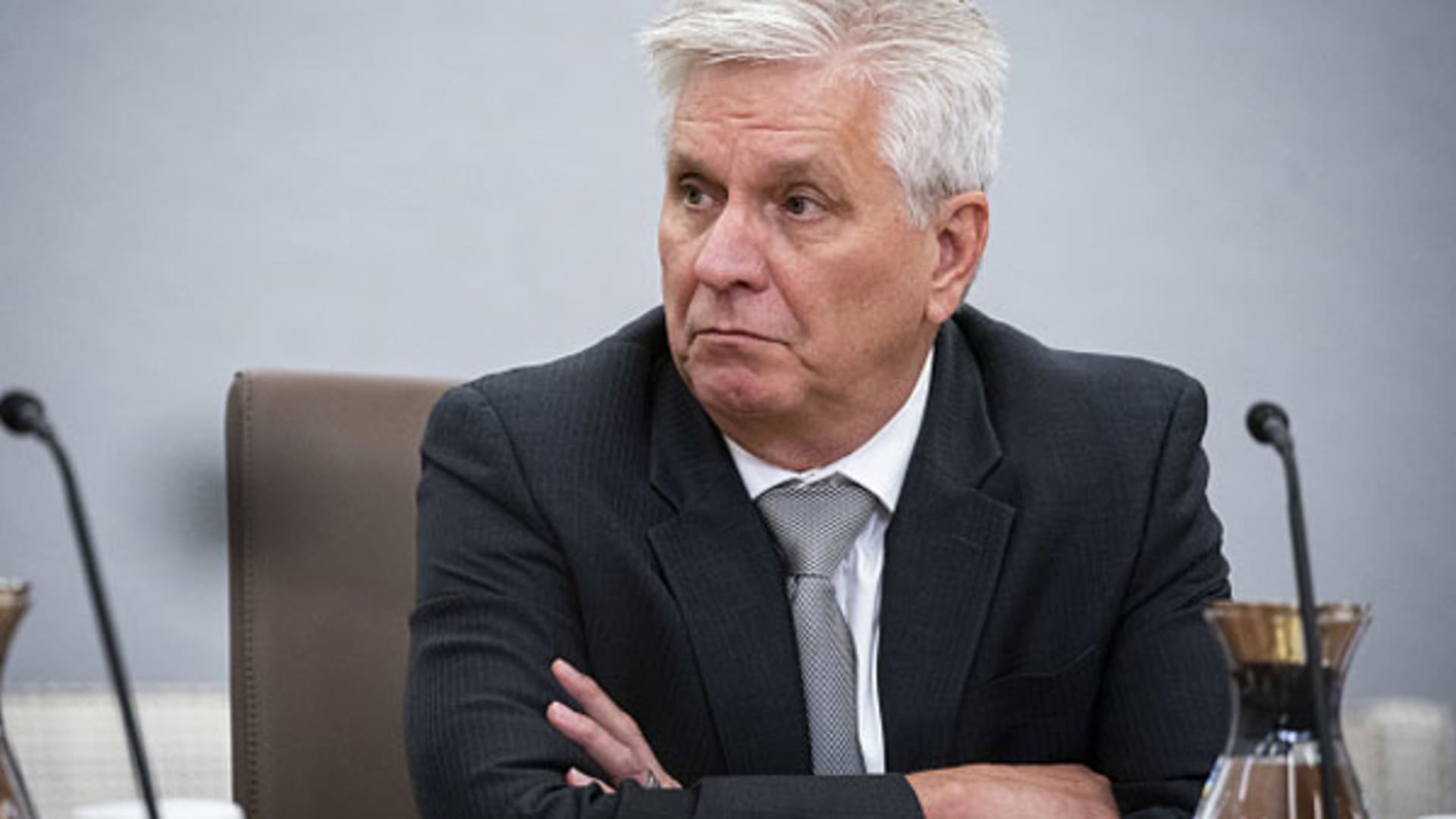Christopher Waller, governor of the US Federal Reserve, during a Fed Listens event in Washington, D.C., on Friday, Sept. 23, 2022.
Al Drago | Bloomberg | Getty Images
Federal Reserve Governor Christopher Waller said Thursday he will need to see more evidence that inflation is cooling before he is willing to support interest rate cuts.
In a policy speech delivered in Minneapolis that concludes with the question, “What’s the rush?” on cutting rates, the central bank official said higher-than-expected inflation readings for January raised questions on where prices are heading and how the Fed should respond.
“Last week’s high reading on CPI inflation may just be a bump in the road, but it also may be a warning that the considerable progress on inflation over the past year may be stalling,” Waller said in prepared remarks.
While he said he still expects the Federal Open Market Committee to begin lowering rates at some point this year, Waller said he sees “predominately upside risks” to his expectation that inflation will fall to the Fed’s 2% goal.
He added that there are few signs inflation will fall below 2% anytime soon based on strong 3.3% annualized growth in gross domestic product and employment, with few signs of a potential recession in sight. Waller is a permanent voting member on the FOMC.
“That makes the decision to be patient on beginning to ease policy simpler than it might be,” Waller said. “I am going to need to see at least another couple more months of inflation data before I can judge whether January was a speed bump or a pothole.”
The remarks are consistent with a general sentiment at the central bank that while further rate hikes are unlikely, the timing and pace of cuts is uncertain.
The inflation data Waller referenced showed the consumer price index rose 0.3% in January and was up 3.1% from the same period a year ago, both higher than expected. Excluding food and energy, core CPI ran at a 3.9% annual pace, having risen 0.4% on the month.
Reading through the data, Waller said it’s likely that core personal consumption expenditures prices, the Fed’s preferred inflation gauge, will reflect a 2.8% 12-month gain when released later this month.
Such elevated readings make the case stronger for waiting, he said, noting that he will be watching data on consumer spending, employment and wages and compensation for further clues on inflation. Retail sales fell an unexpected 0.8% in January while payroll growth surged by 353,000 for the month, well above expectations.
“I still expect it will be appropriate sometime this year to begin easing monetary policy, but the start of policy easing and number of rate cuts will depend on the incoming data,” Waller said. “The upshot is that I believe the Committee can wait a little longer to ease monetary policy.”
Markets just a few weeks ago had been pricing in a high probability of a rate cut when the Fed next meets on March 19-20, according to fed funds futures bets gauged by the CME Group. However, that has been pared back to the June meeting, with the probability rising to about 1-in-3 that the FOMC may even wait until July.
Earlier in the day, Fed Vice Chair Philip Jefferson was noncommittal on the pace of cuts, saying only he expects easing “later this year” without providing a timetable.
Governor Lisa Cook also spoke and noted the progress the Fed has made in its efforts to bring down inflation without tanking the economy.
However, while she also expects to cut this year, Cook said she “would like to have greater confidence” that inflation is on a sustainable path back to 2% before moving.
This story originally appeared on CNBC

